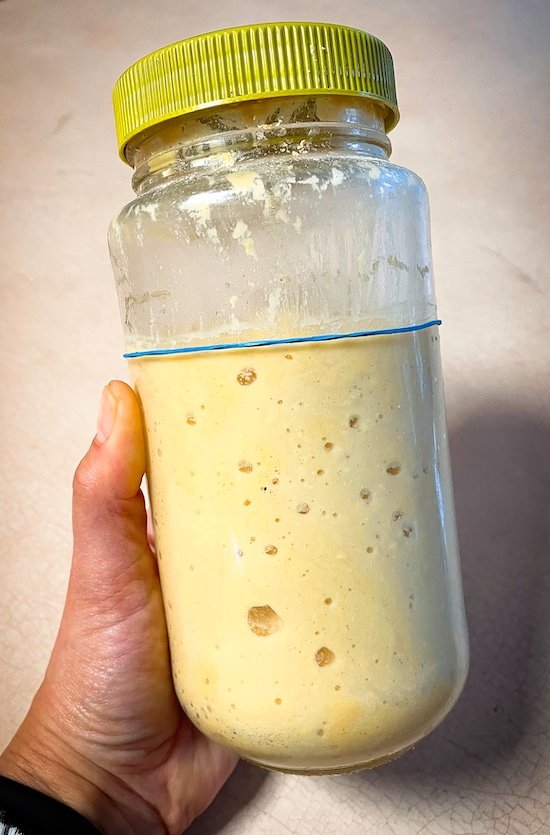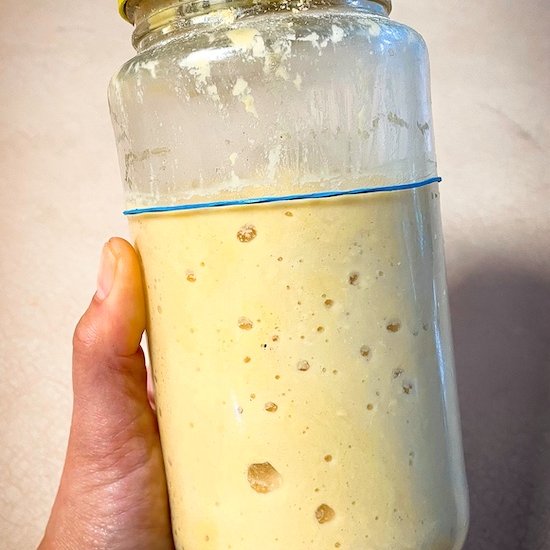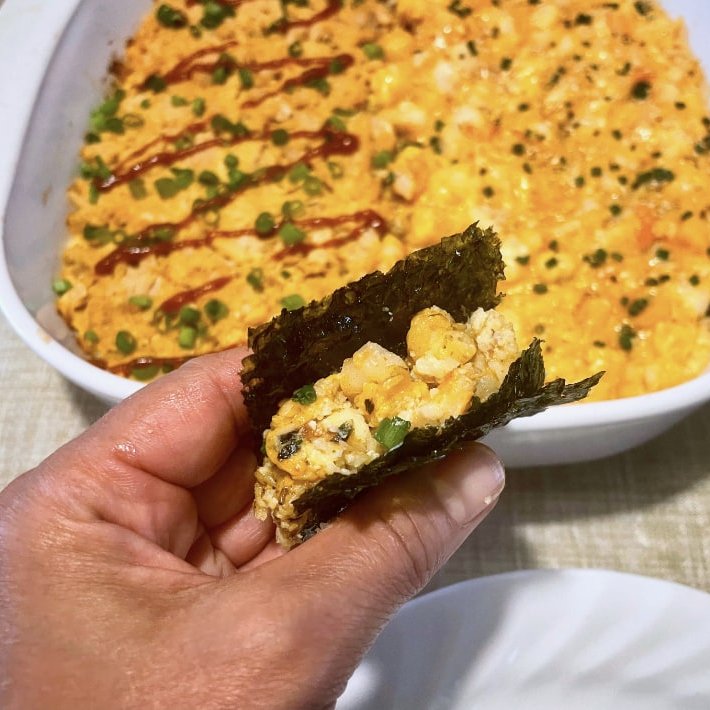
I am really into fermented foods these days, and all the health benefits that come with them. I'll even have sourdough bread on my carb-up days. I enjoy it so much I made it my mission to come up with a keto-friendly fermented sourdough bread recipe. I have figured out the starter and have successfully used it to make a decent keto-friendly, gluten-free sourdough pizza crust. I've also used my sourdough discard in a variety of recipes for baked goods, like my keto sourdough starter crackers. I'm still trying to dial in my perfect bread, but it's taking a lot of trial and error.
In the meantime, my lupin flour sourdough starter is a lock, and has stayed alive and healthy for over 4 months now, and they say that only get better with age. If you would like to give it a shot, I'll go through the process of creating your own starter. By the way, there is a tradition of naming your sourdough starter. Mine is called "Lupin the 3rd", named after an old cartoon show character, but also a play on words as it was the lupin flour was the third kind of flour I tried using to make a starter.
Tools and Ingredients Needed:
- 1 quart mason jar or similar tall jar
- Digital kitchen scale that weighs in grams
- 3 lb lupin flour
- Distilled or de-chlorinated water, 200g per feeding (Read how to de-chlorinate water.)
Directions:
Turn your digital scale on and set units to grams. Weigh your jar, noting down its weight in grams, then tare the scale to zero, meaning your scale will show 0g rather than the weight of the jar. Add 75g of lupin flour to the jar and then pour in the 200g of water. Mix well until fully incorporated. The mixture will be thick. Lightly screw on the lid (light enough to allow air to escape) and let sit out at room temperature for 24 hours.
After 24 hours there will be no visible change. Weigh the jar with the starter in it. Now for the math. Subtract the weight of the jar from the total weight of the jar with the starter in it. Take this result and divide it in half, then add back in the weight of the jar. This is the target weight you want in the jar. Dump out the starter until you get to this target weight. Now add 75g of lupin flour and 200g of de-chlorinated water. Stir well then lightly screw the top on the jar, same as before. (*Note: You can use sourdough discard in other recipes to reduce waste. Try my keto sourdough discard crackers recipe, or try swapping out a portion of nut butter or an equal amount of flour and liquid from other recipes.)
This process is called a feeding. You need to feed your sourdough starter daily for at least 7-10 days in order for it to grow and mature. Every day during the maturation period you will repeat the feeding process detailed above. By day 3, it should start to smell like rotten eggs, and will have risen noticeably.
As the days go by it will slowly start to smell sweeter and more vinegary, like sourdough. If you want your sourdough to be fully mature, continue this feeding process for a full 14 days for a more flavourful starter.
Once your sourdough is mature, you no longer have to discard any because it will be mature, and you can bake with it. But the sourdough still needs to be feed, and you have two options. You can leave it at room temperature, but you will have to continue with the daily feedings and that can get expensive if you don't bake bread daily. The other option, what I do, is to store your sourdough starter in the fridge. This will slow down it's growth, causing it not to only need to be fed once a week.
To do this, you simply take out what you need for whatever recipe you're making, and then feed it with 75g of lupin flour and 200g of water. Since lupin flour is fairly expensive, once my starter reached maturity, I tried using a combination of it and oat fibre (50g lupin flour and 25g oat fibre) to help cut down the cost of feedings. This has been working out well for me so that’s what I have continued to do since then.
Did you try making your own keto lupin flour sourdough starter? If so, how did it go, and what did you name your starter? Or if you shared pics of your starter on Instagram, please tag me so I can see them. Enjoy! :)




